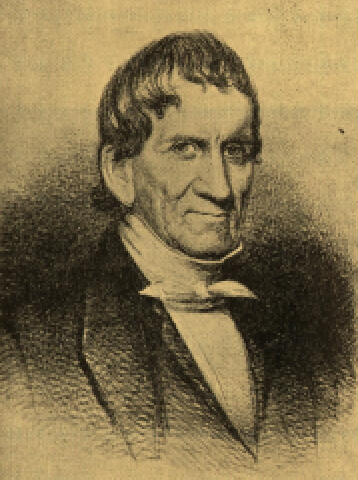
Moses Sheppard's earliest recollection
of home was a dirt-floor cabin. He once said that he had given away or
lost more than he ever expected to possess. His family, loyal to England,
lost its property during the Revolutionary War. Moses Sheppard began working
as an errand boy for a merchant, John Mitchell. Within a few years he became
Mitchell's partner and then succeeded him as the firm's sole proprietor.
Like many Quakers, he was active in the abolition movement and an active
supporter of the Protective Society of Maryland to Protect Free Negroes;
the American Antislavery Society; and the Society of Friends Indian Affairs
Committee. Sheppard was influential in stopping legislation that would
have banished free African-Americans from Maryland. He left the fortune
he had amassed during his lifetime to found the Sheppard Asylum.
Sheppard and Pratt Hospital
Moses Sheppard spent years planning
for a new hospital for the mentally ill, studying the designs of the best
asylums in the country and the most advanced and humane methods of treatment.
Three hundred acres of land on Charles Street and York Road in one of the
most picturesque sections of Maryland were acquired for the new institution.
Chartered in 1853, the cornerstone for the building was laid in the spring
of 1862. The entire complex opened for patients in December of 1892. The
Sheppard Asylum was considered the most advanced in the country for its
time.
In 1898 a bequest from Enoch Pratt
added a substantial endowment to the hospital. The name of the hospital
was then changed to Sheppard and Enoch Pratt. |